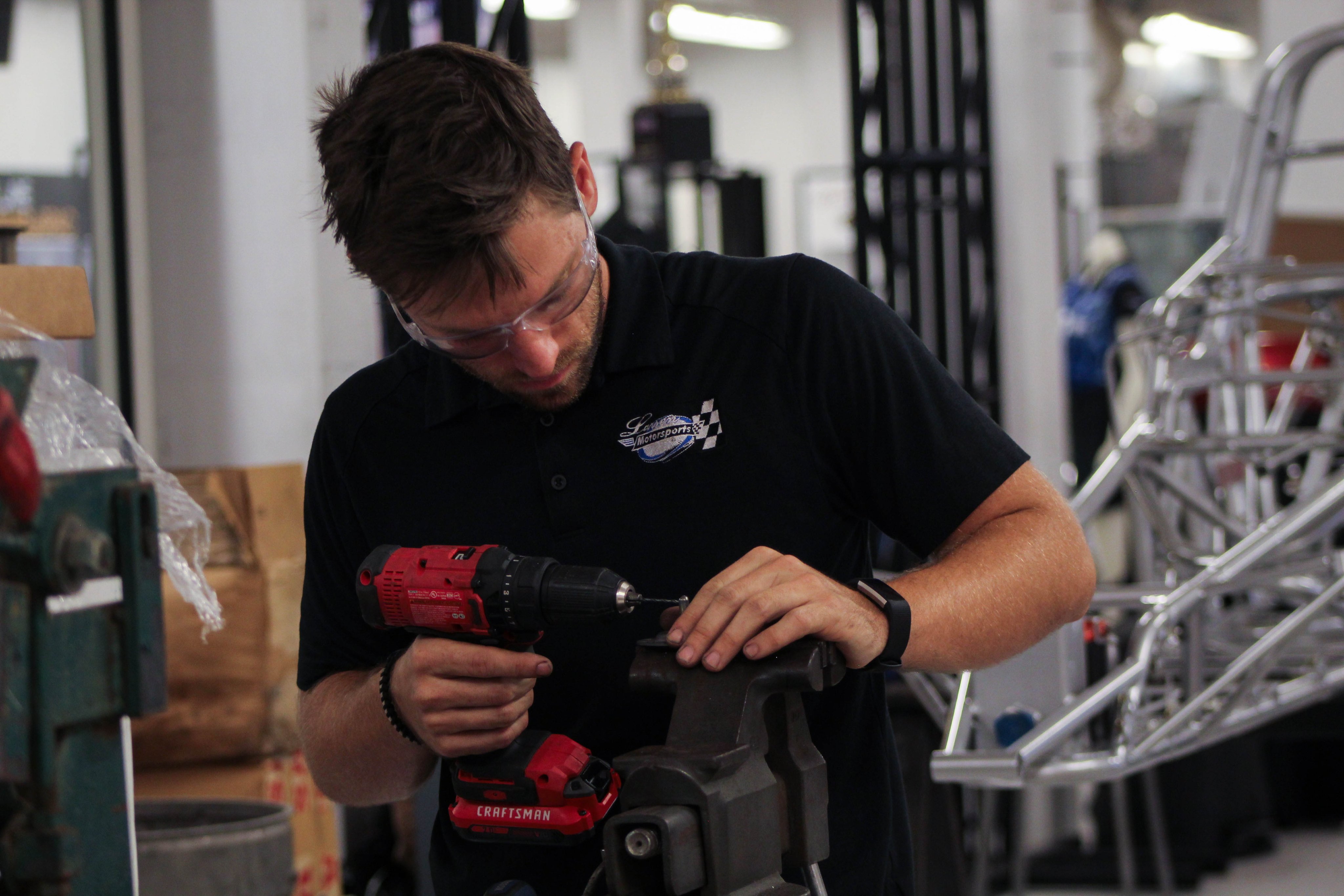High-precision micro dispenser manufacturer, nScrypt, has revealed that it has 3D printed engine parts for automotive R&D firm Larsen Motorsports’ latest dragster.
Utilizing nScrypt’s ‘nRugged’ system, Larsen has been able to replace the outdated gaskets on the fuel pumps of its new ‘Gen 6’ jet-powered car, with more durable fabricated seals. After an arduous six-month testing process, the parts proved to be 100% reliable, showing the end-use efficacy of nScrypt’s machine when applied within harsh environments.
“We are excited at the opportunity to collaborate with Larsen Motorsports on its Gen 6 jet car dragster,” said Mike Newton, nScrypt’s Director of Electronics Packaging. “It is an ideal platform for 3D printing and testing both mechanical parts, like the fuel pump gaskets, but also 3D manufactured electronics, which are our systems’ sweetspot.”
“The nRugged system gives nScrypt and its customers an edge for 3D printing in harsh environments.”

nScrypt’s ‘Factory in a Tool’
nScrypt’s Factory in a Tool (FiT) platforms are designed to provide users with an all-in-one tool for 3D printing, milling, polishing and post-processing, while yielding complete ‘Printed Circuit Structures.’ The firm’s original FiT 3Dn-1000 system features multiple tool heads, enabling materials such as composites or continuous carbon fibers to be mixed during printing.
What’s more, the platform’s precision linear motion gantry allows adopters to use up to five heads at once, and these can be tracked with built-in cameras. FiT technology’s ability to print directly onto conformal surfaces has often leant it embedded electronic applications, but it has also been used in bioprinting tests, such as those conducted onboard the ISS which yielded a 3D printed human knee.
Similarly, nScrypt has found military biofabrication applications for its nRugged FiT system, which is specifically designed to be used within hostile environments. As part of the United States Military Academy’s ‘4D Bio3 Program,’ the machine was utilized to 3D print an orthopedic screw while mounted to the back of a truck.
The project proved both the portability of the nRugged, and its ability to continue printing with precision, even when it encounters tough terrain. However, through its partnership with Larsen, nScrypt has now deployed its machine in completely different territory, to 3D print functional end-use parts for a jet-propelled hypercar.

Larsen’s jet-powered dragsters
Based in the heart of Florida’s ‘space coast’ corridor, Larsen is an automotive research and development firm that seeks to blend traditional processes with emerging technologies. The company has a 30,000 sq. foot production facility, which it uses to house its design and engineering operations, as well as its 3D scanning-as-a-service offering.
Primarily, Larsen is known for running its Dominator and Florida Tech dragsters, which are piloted by DeWayne Hill, and multiple-champion Elaine Larsen. The 5000hp jet-propelled cars are highly-technical, and capable of reaching speeds up to 296 mph, but Larsen has found that their fuel pumps are becoming antiquated by modern standards.
“The jet racing industry standard afterburner fuel pumps that most jet cars use were produced in the 1960s,” explained Chris Larsen, CEO of Larsen Motorsports. “We have a very large inventory of surplus afterburner fuel pumps, but all of them have seals that are now deteriorated beyond serviceability.”
That’s why Larsen has turned to nScrypt’s nRugged 3D printer, as a means of producing more durable gaskets for the fuel pumps of its upcoming Gen 6 dragster. The engine parts, which were produced in PEEK due to the material’s inherent strength and temperature-resistant qualities, have since been tested via a six-month dunking in jet fuel.
Having survived trial by petrol without suffering a single failure, the additive seals will now be fitted to the fuel pumps of the prototype vehicle. Given the stresses and strains that the components are set to endure, the project’s success reiterates the prowess of the nRugged, for printing parts with harsh environment applications.
Additive automotive upgrades
nScrypt’s printer is by no means the only one that’s capable of producing optimized car parts, and some of automotive’s biggest firms have embarked on similar projects over the last year.
Researchers from Fraunhofer IAPT have worked with engineers from Fiat Chrysler Automobiles (FCA) to 3D print upgraded suspension parts for one of its sports cars. Using AM, the team were able to integrate the vehicle’s brake caliper into its wheel carrier, making it lighter and more fatigue-resistant.
Similarly, sports car manufacturer Porsche has worked with TRUMPF and MAHLE to 3D print pistons for the engine of its 911 supercar. The joint-team deployed an AI-led process to integrate a cooling duct into the component’s crown that added 30 bhp to the engine’s horsepower.
Elsewhere, multinational power management firm Eaton has launched a new metal 3D printing program, that’s designed to improve efficiency within its vehicle production process. During the project, the company will begin fabricating automotive prototypes, fixtures, safety devices and maintenance components.
To stay up to date with the latest 3D printing news, don’t forget to subscribe to the 3D Printing Industry newsletter or follow us on Twitter or liking our page on Facebook.
Are you looking for a job in the additive manufacturing industry? Visit 3D Printing Jobs for a selection of roles in the industry.
Featured image shows one of Larsen Motorsports’ current Florida Tech dragsters. Photo via Larsen Motorsports.



